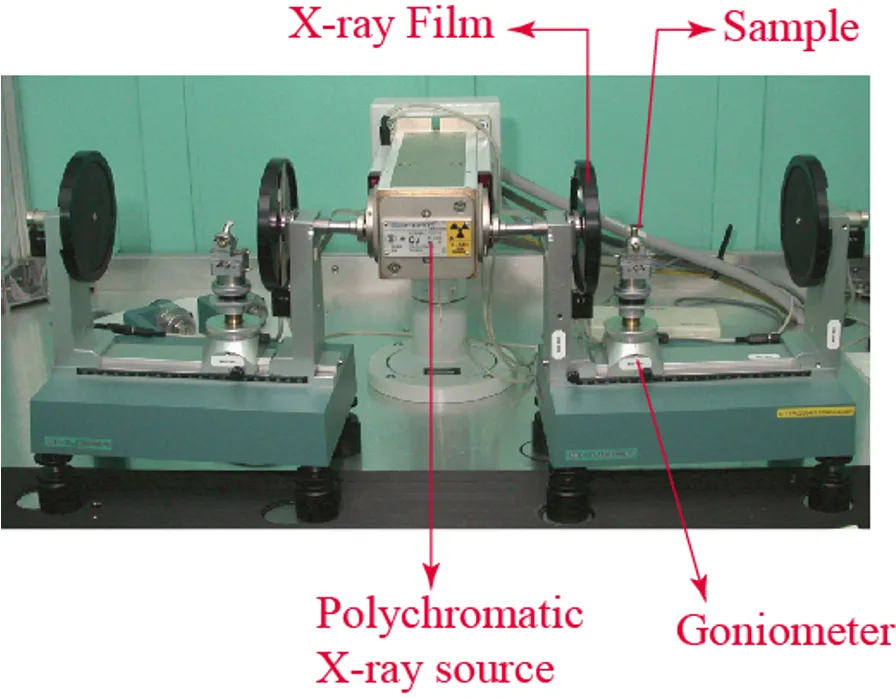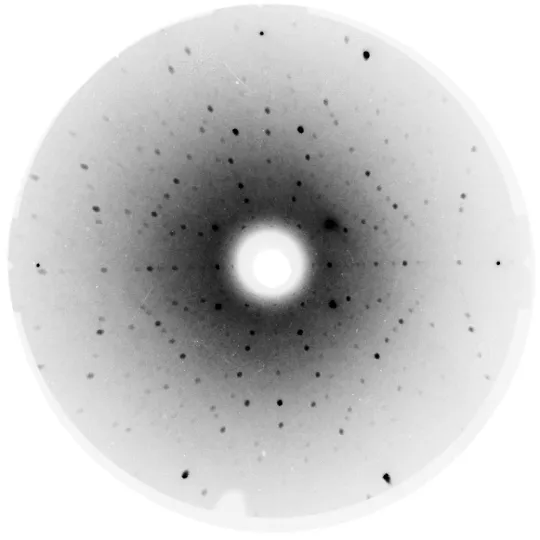Laue diffraction
Laue diffraction is similar to the powder x-ray diffraction. In this case we use a white x-ray beam instead of monochromatic one. And instead of all possible orientation of the crystal, we expose a single crystallographic surface. The periodic arrangement of atoms inside a solid can be experimentally checked by Laue x-ray diffraction.
In this technique, a beam of white x-ray (a continuous range of wavelength) is collimated over a single crystal. Depending on the property of the material, a back reflected or transmitted scattered x-ray pattern is collected over a x-ray film or image plate.

Fig.: A typical laboratory Laue setup.
Since we are using a white x-ray, we will have a dot for all sets of crystallographic planes. This is how a typical x-ray pattern of a single crystal look like.

Fig.: Laue pattern of CeGe [010] surface. CeGe has orthorhombic crystal structure.
The single crystal is mounted on a triple axis goniometer. The single crystal can be translated and rotated along all three mutually perpendicular axes.
Once the single crystal direction is fixed, the same goniometer can be transported to a wire cutting machine, and cut in a particular shape (generally rectangular bar form) for various anisotropic measurements, for example, electrical transport measurement.